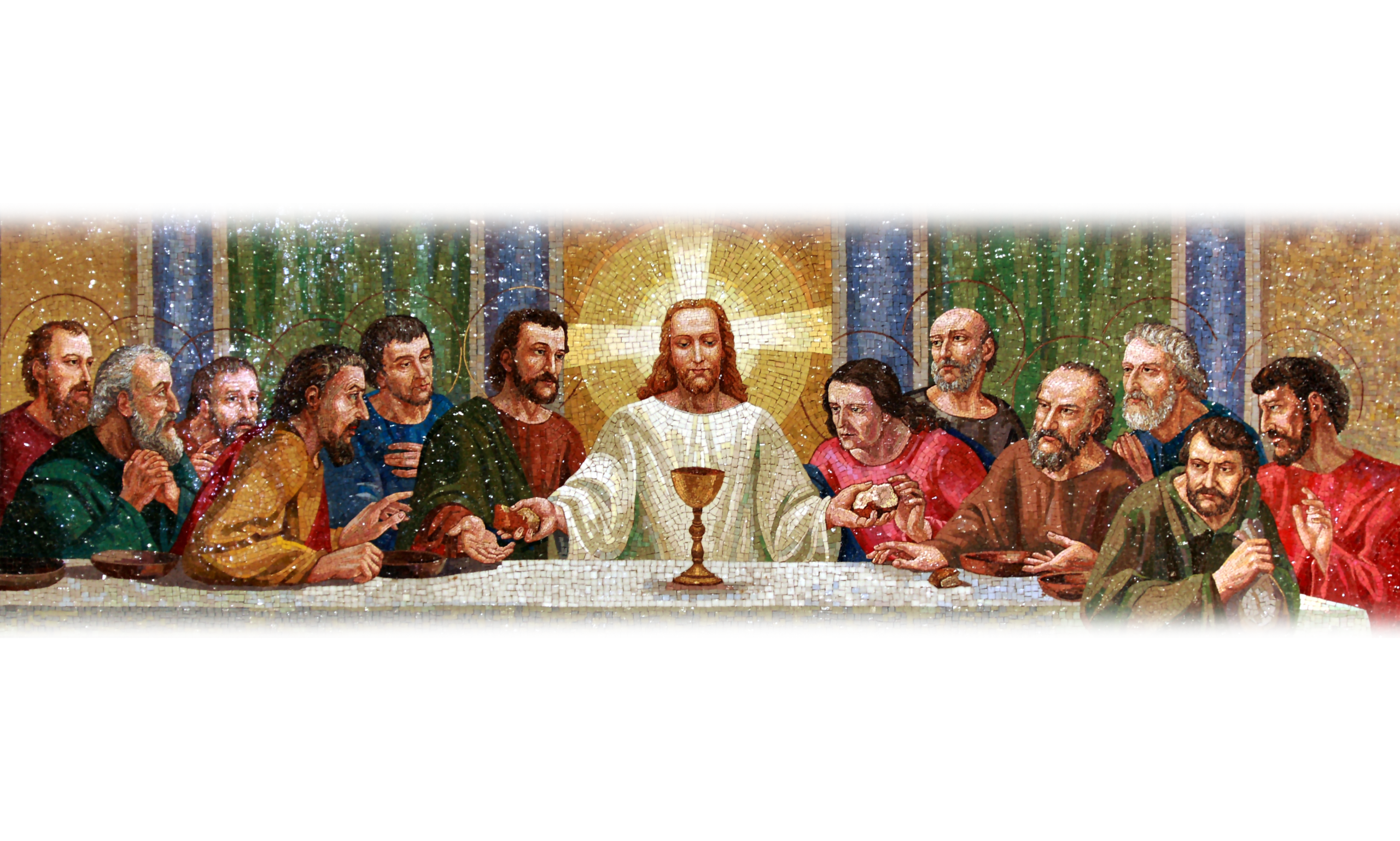The Holy Cup

As the Church around the world celebrates the resurrection of Jesus Christ and His victory over death on our behalf, our minds often turn to the last days of His earthly ministry. We recount His triumphal entry into the city of Jerusalem and His actions among the religious leaders on the Temple Mount. We read of His anointing by a repentant sinner and His last supper with His closest friends.
This supper, a Passover Seder, is known as The Last Supper. This is certainly the most commemorated moment in the life of Jesus. We remember this event every time we take the cup and eat the bread. Book upon book has been written as to the meaning and nature of the elements. I will not, nor cannot, share with you any new insights into these weighty matters that have been thoroughly debated by the best minds of Christendom. But I will share with you a small bit of illumination into the material culture of Christ in the Passover.
Jesus had come to Jerusalem. The religious leaders were seeking an opportunity to kill Him for what they considered to be blasphemy; the teacher, being a man, had dared to call Himself God. Coming to Jerusalem from Jericho by way of Ephraim, Jesus openly entered the city on a donkey, like one of the kings of old, in the days before exile. The people shouted praises to God while calling Jesus the long-promised Messiah. The religious leaders would have to bide their time. Meanwhile they seethed with rage as they helplessly watched the spectacle before them.
After several days of confronting the Pharisees, Sadducees, and scribes in the courts of the Temple, Jesus quietly prepared for His last Passover celebration with those He loved. He sent his disciples to find a man carrying a jug of water. This was simple, men did not carry water…that was considered women’s work. The disciples found the man and followed him to a kataluma to prepare for the observance.
A kataluma (Gr. Κατάλυμα) is what we today would call a guest room. Found in Luke’s account of the Last Supper, the word is also used in chapter two of Luke’s Gospel when Joseph and Mary arrived in Bethlehem for the census but found no room in the kataluma. There are certainly interesting tidbits to consider about Jesus and the katalumas at the beginning and ending of His earthly ministry, but we will discuss these another time; I’ll wait a few months before ruining Christmas.
The host has prepared the kataluma for the guests. Perhaps the master of the house is a follower of Jesus; we don’t really know. It is speculated by some scholars that John Mark is the son of the host and perhaps the young man who would, in a short time, flee naked from the ruckus in the garden. Again, we just don’t know. A limestone basin of water, a precise measurement, is provided and, despite protests by Peter, Jesus washes the feet of his followers.
Jesus and his disciples recline on couches as the traditional Passover dishes are served by the master of the house. Whether or not the owner of the house is a disciple of Christ, Jesus is, nonetheless, a well-respected rabbi and everything must be kosher.
Several cups of wine will be shared during the meal: four according to the Mishna. Whether this wine is alcoholic or not is immaterial to the purpose of this article and I will leave that between you and the Lord so as not to derail us here. It is during one of these cups, likely the third, the cup of salvation, that Jesus will hold the cup and utter some very perplexing words to His friends, “This cup is the new testament in my blood, which is shed for you.” It is easy for us to look back at this moment and take the words of Jesus for granted; we know what happens next. The disciples, on the other hand, have just seen their teacher praised by the people in the city and answer the religious leaders with concise and undeniable wisdom. The Kingdom of God is at hand.
These twelve men had no idea what was about to happen. They did not know that their hopes would, over the next few days, be utterly dashed to pieces. This cup represents the blood of Jesus that would soon be shed for a new covenant between God and mankind.
Let us now take our leave of the disciples and focus on this cup. While the cup in Jesus’ hand is merely a vessel that contains the fruit of the vine, it represents so much more. This is the blood of Jesus. It is shed for you. It seals a new covenant. It is no wonder that superstitious men will covet this cup. In their imaginations, it is a relic of unimaginable power. Life eternal. The Holy Grail.
The scene is classic. Indiana Jones has worked his way into a protected chamber in a secret valley that bears a striking resemblance to the Nabatean city of Petra. Inside, is an ancient Knight Templar, guardian of the sacred vessel. The evil Nazi has followed Dr. Jones’ trail and joins him in the room full of chalices. To save his dying father, our intrepid archaeologist must choose from a shelf of cups; which is the true grail?
Helped by the beautiful but dangerous Austrian archaeologist, Dr. Elsa Schneider, the antagonist chooses a jewel-encrusted golden cup and takes a drink. In mere seconds, the villain ages, dies, and withers away, leaving a pile of dust and bone, identifiable only by a swastika-bearing lapel pin. Our hero looks over the shelf of grails and settles on a plain pottery cup, the cup of a carpenter (never mind that the world’s greatest archaeologist doesn’t know the difference between Joseph of Arimathea and Joseph the husband of Mary). After drinking from the ceramic cup, Indy is told by the knight that he has chosen wisely. After saving his father, dropping the femme fatal into an abyss, and bringing the ancient structure down on the head of a 700-year-old knight, Indiana Jones rides triumphantly into the sunset and won’t return until he hides in a refrigerator from an atomic bomb.
Not to ruin a great movie (and yes, despite my snarky comments, I love Indiana Jones movies), but the great Dr. Jones chose even more poorly than the wicked Nazi. You may be thinking, “But certainly Jesus would not have drunk from a bedazzled golden chalice,” and you would be correct. But he would even more certainly not have been using a pottery vessel. How do we know this? I’m so glad you asked.
During the Second Temple period, there was a sort of religious renaissance in Judea. Throngs of pious Jews would baptize themselves at least once a day in the thousands of mikva’ot (baptistries) that were scattered throughout the land. Jesus was accosted by pompous religious leaders when His disciples ate without washing their hands. It was even considered unclean to eat with Gentiles. Remember when Paul confronted Peter in Galatians chapter 2 for refusing to eat with non-Jews when representatives from James were visiting?
When did this craze of purity begin? Distinguished biblical archaeologist Dr. Shimon Gibson claims that it began during the reign of Herod the Great and lasted about 175 years until the Bar Kochba Revolt in A.D. 135.
Earthenware pottery was susceptible to becoming unclean and, according to Leviticus 11, it must then be destroyed. Part of the ritual purity movement was to make vessels from chalky limestone that could be cleansed. An example of this can be found in John 2:6 when Jesus turned water into wine in stone vessels that were used for purification rites.
Almost any archaeological dig in Israel that uncovers a 1st century domestic context can expect to find chalky limestone fragments of cups and bowls. In fact, the second artifact that I uncovered during my first dig at Shiloh was the handle of a stone cup. I was able, as a first-year archaeology student, to identify the find instantly.
These stone cups have a very recognizable typology. The material is a white, lightweight stone that scratches easily. The vessels, even after being smoothed, usually bear chisel marks that can be seen when held to the light at the right angle. These vessels are sometimes mug-shaped, with a handle on one side, but seem more often to bear two handles, making them appear like large white sippy-cups. While these cups would win no beauty contests, they were used when the situation called for religious purity.
The master of the kataluma would have made sure that everything was prepared for his special guest. Jesus, the long promised Anointed One had come. He was a guest in this man’s house. Surely the King of the Jews should not be given an earthenware cup to celebrate the Passover. Only a ritually pure vessel would suffice for the Messiah.
When you think of Jesus giving the cup to His followers and commanding them to follow this practice in remembrance of Him, don’t simply think of a chalky limestone cup with handles, think of the One who shed his blood for you. You have a choice to accept or reject the Christ. Choose wisely.
More from Prophecy in the News Magazine
This site uses Akismet to reduce spam. Learn how your comment data is processed.




Leave a Reply